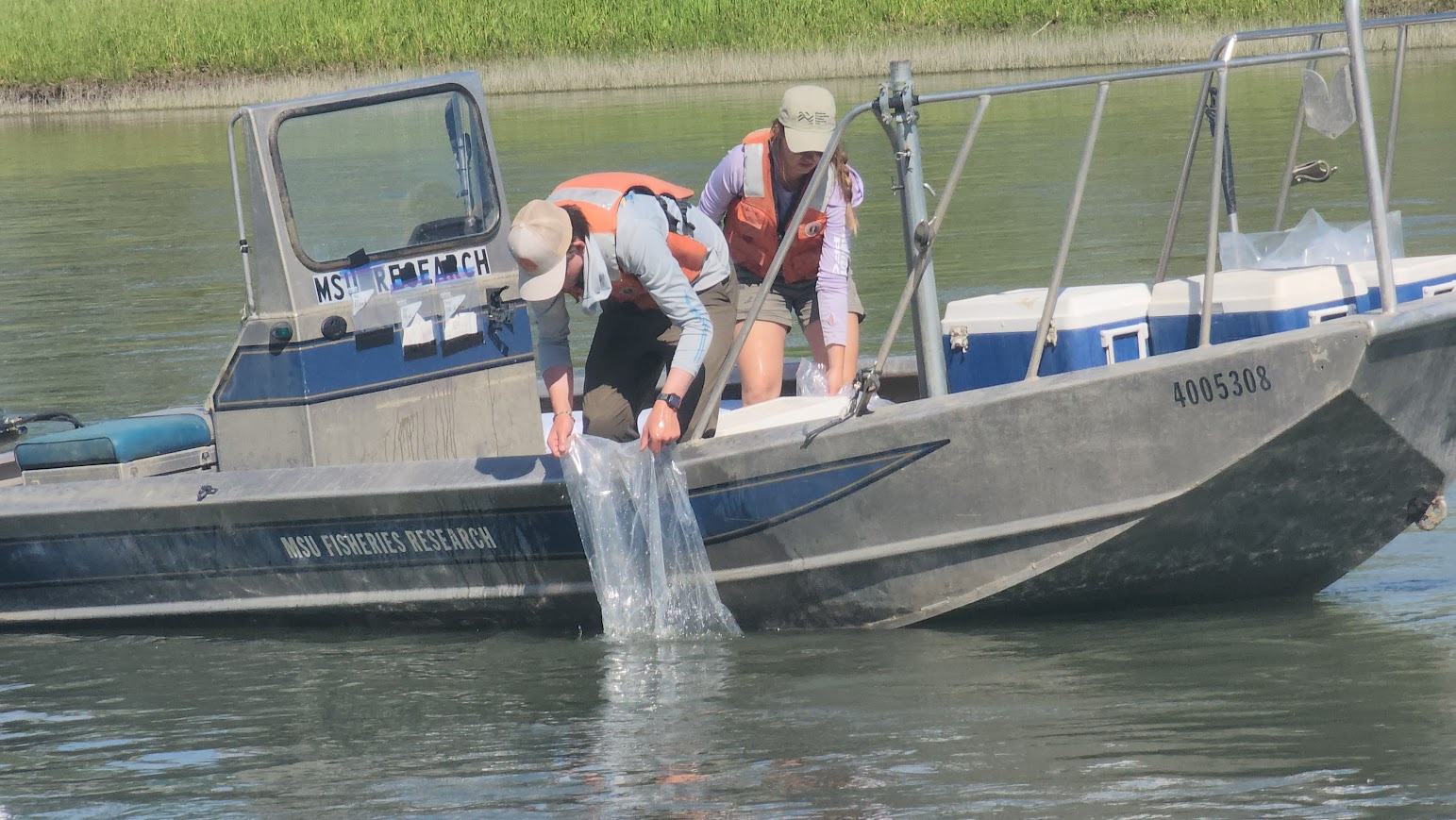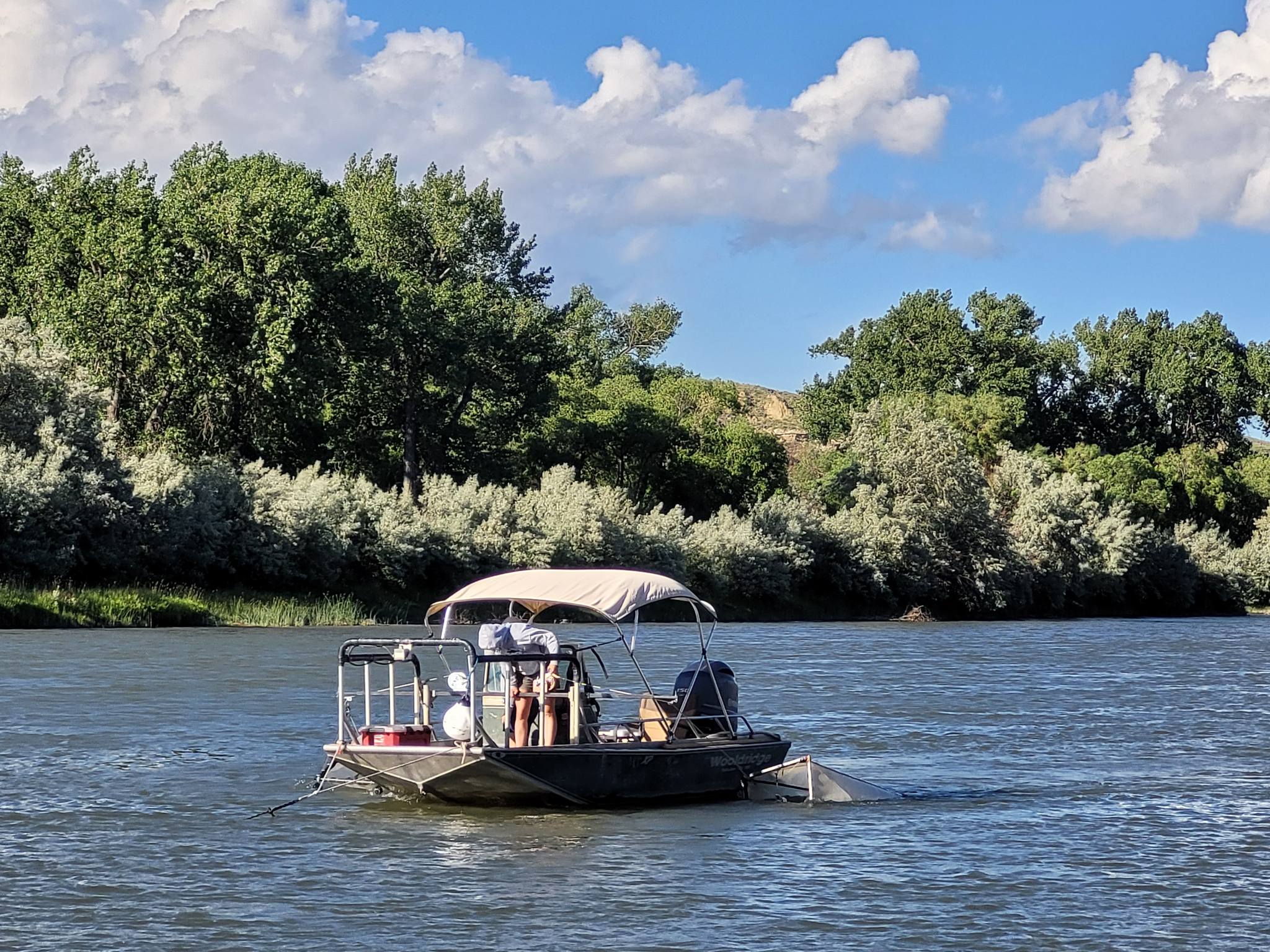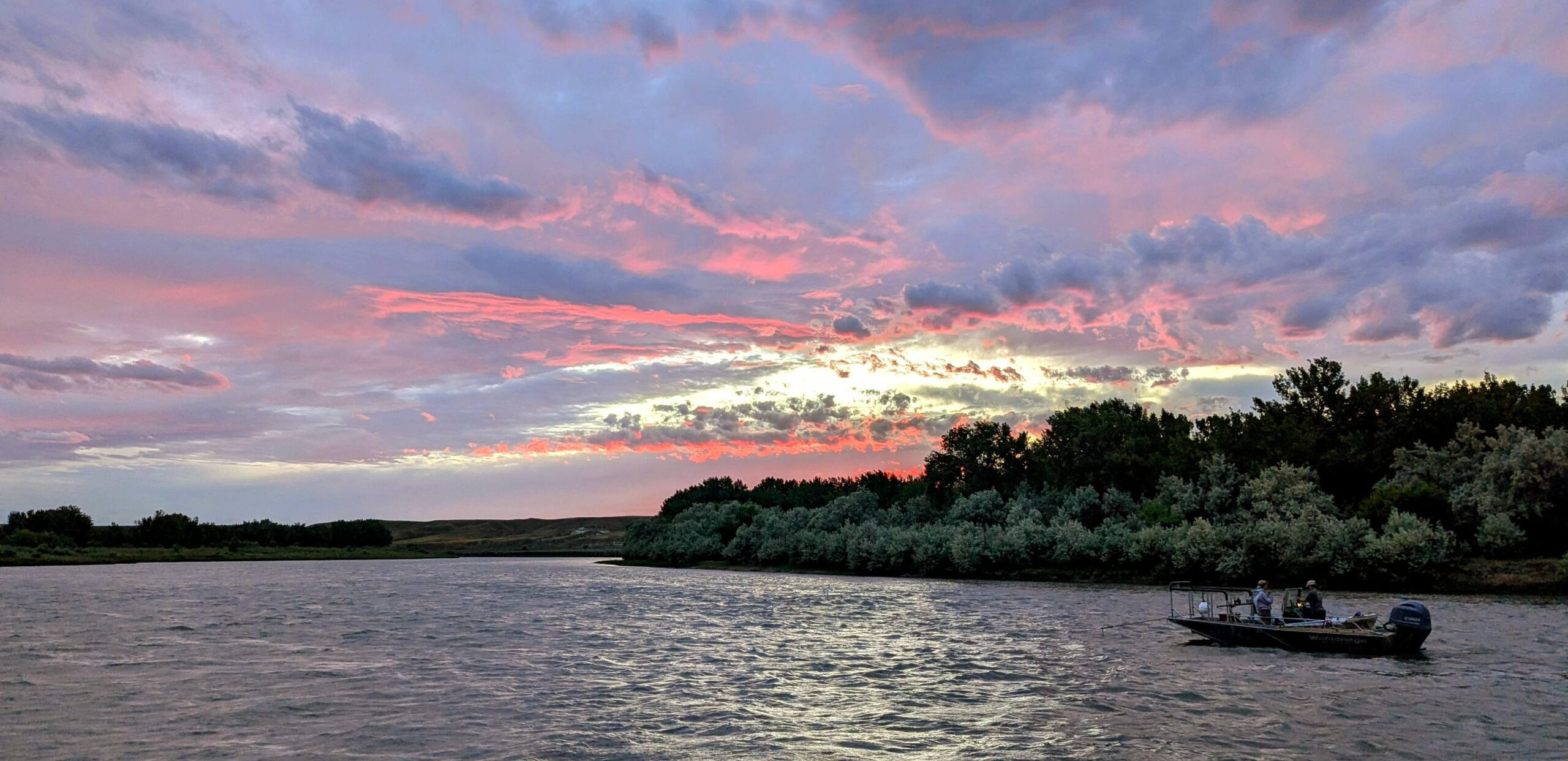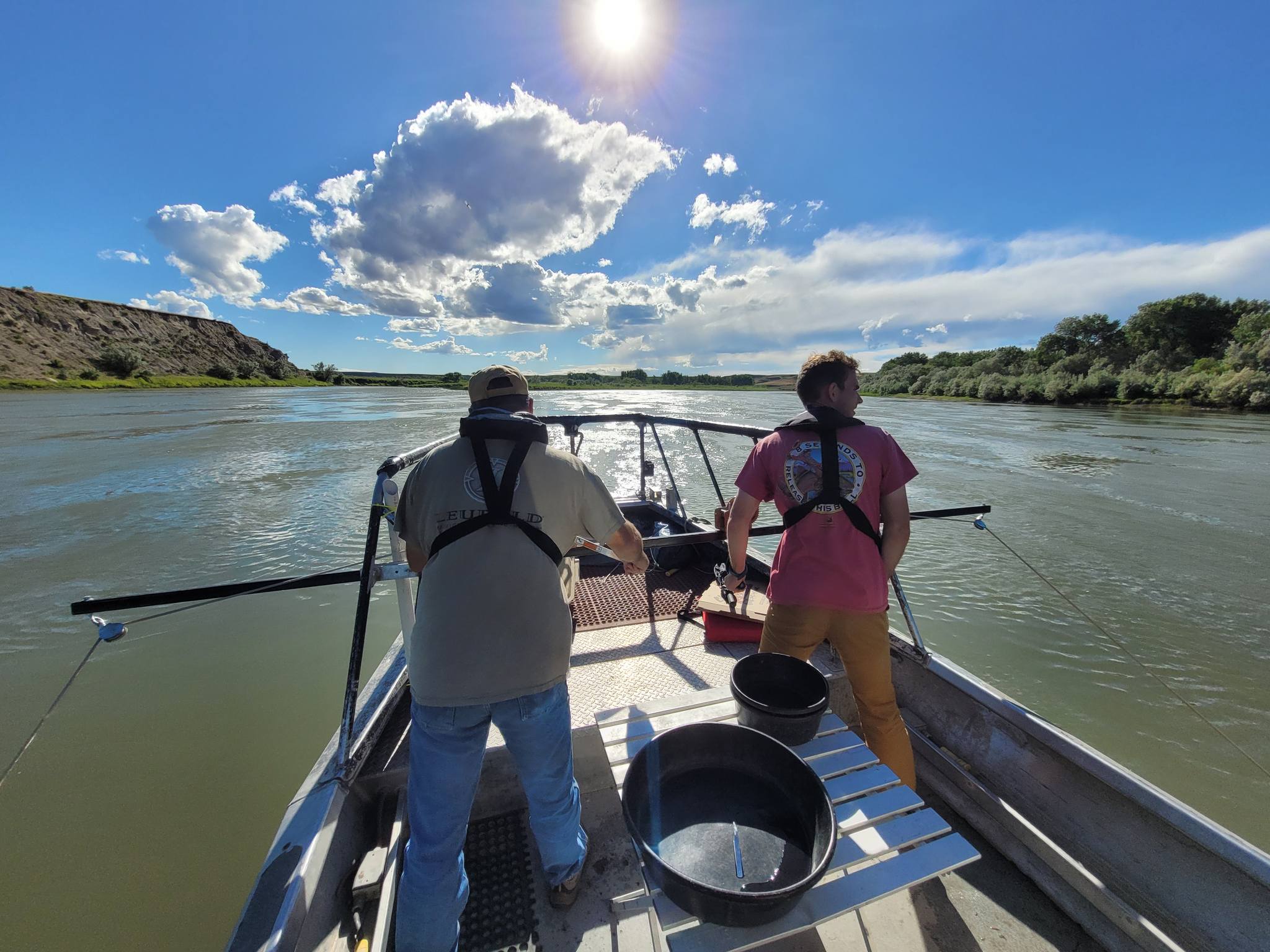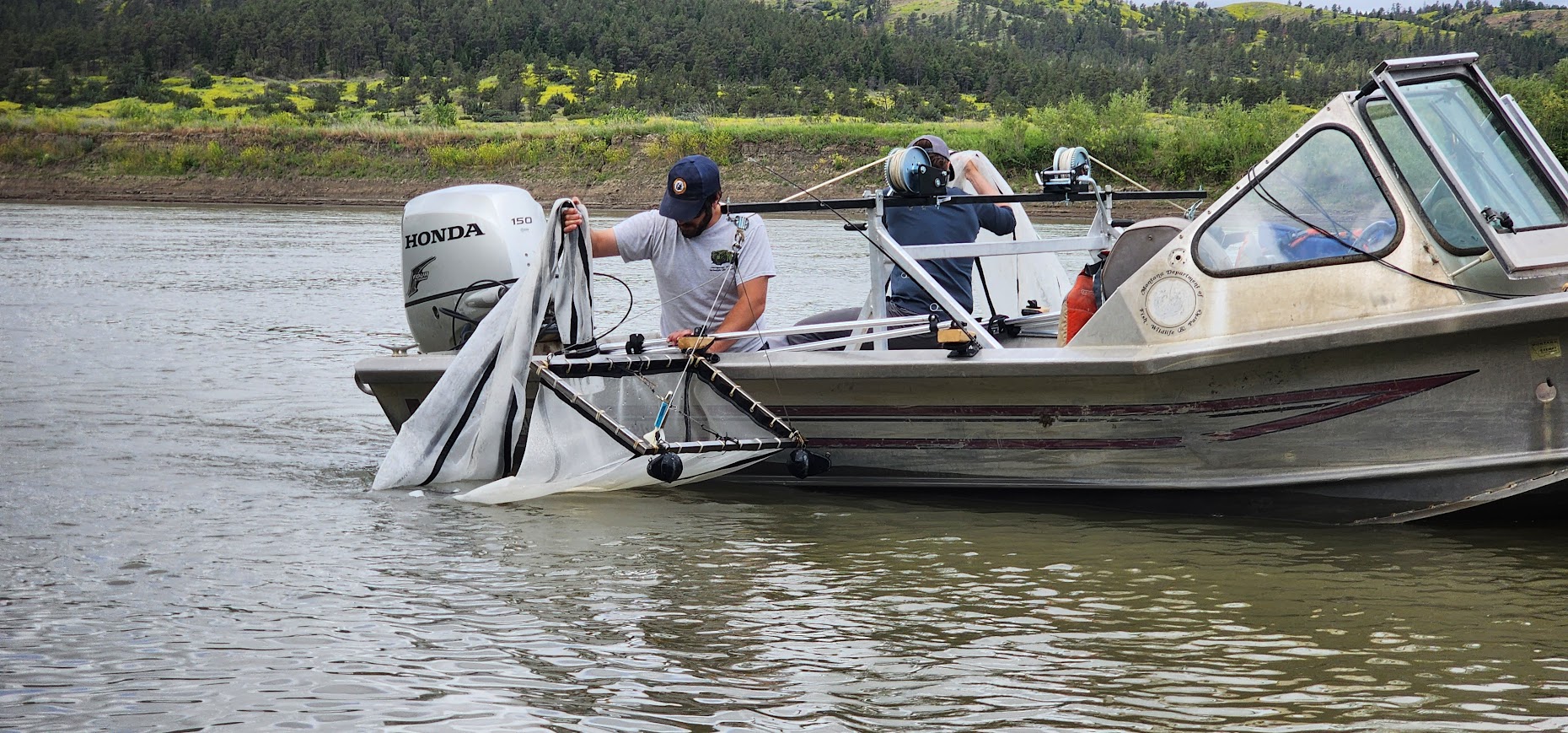A study currently underway in the Missouri River between Fort Benton and Fort Peck Reservoir is testing how well pallid sturgeon larvae survive and move in the river during their critical first few days after hatching.
Pallid sturgeon are endangered in Montana and are about the size of a grain of rice in their larval stage after hatching. They are unable to swim well and drift downstream over long distances in the river in their first few days, surviving by absorbing nutrients from their yolk sack.
If the sturgeon larvae drift into the low velocity habitat in the upper reaches of Fort Peck Reservoir before fully absorbing their yolk sack, they encounter low oxygen conditions near the stream bed and die. A natural spawning event in the upper reaches of this section of the river provide the best chances for the larvae to survive.
To conduct their research, biologists released over a million larvae collected from hatchery pallid sturgeon and released them into the Missouri River below Fort Benton. Using fine mesh ichthyoplankton nets during 24-hour round-the-clock netting allows biologists to track the downstream movement of the drifting fish and helps them better understand how environmental conditions impact the ability of the tiny sturgeon to survive their long journey downstream.
Biologists hope that this research will help them better manage and increase wild pallid sturgeon numbers in Montana’s Missouri River above Fort Peck Reservoir.

